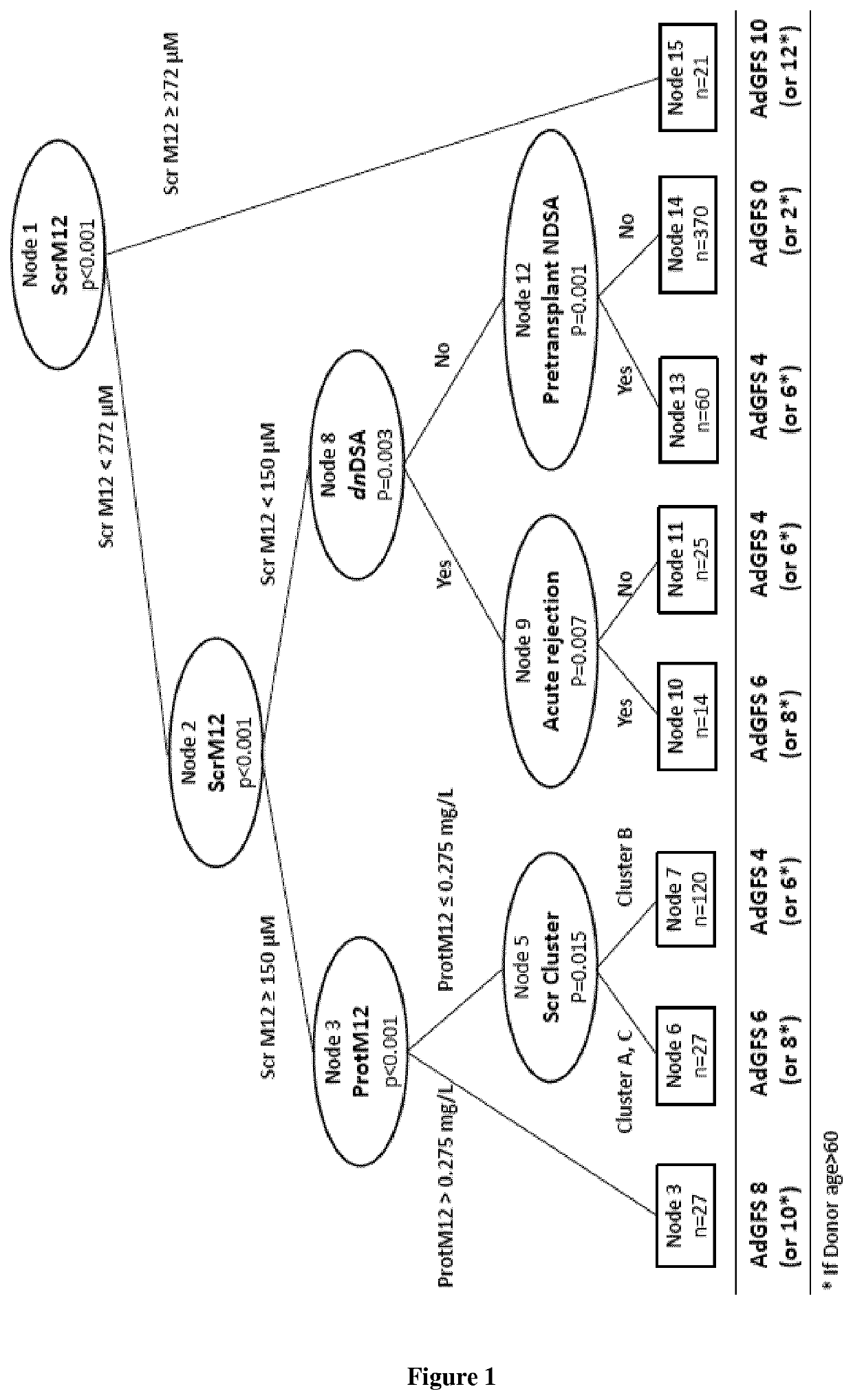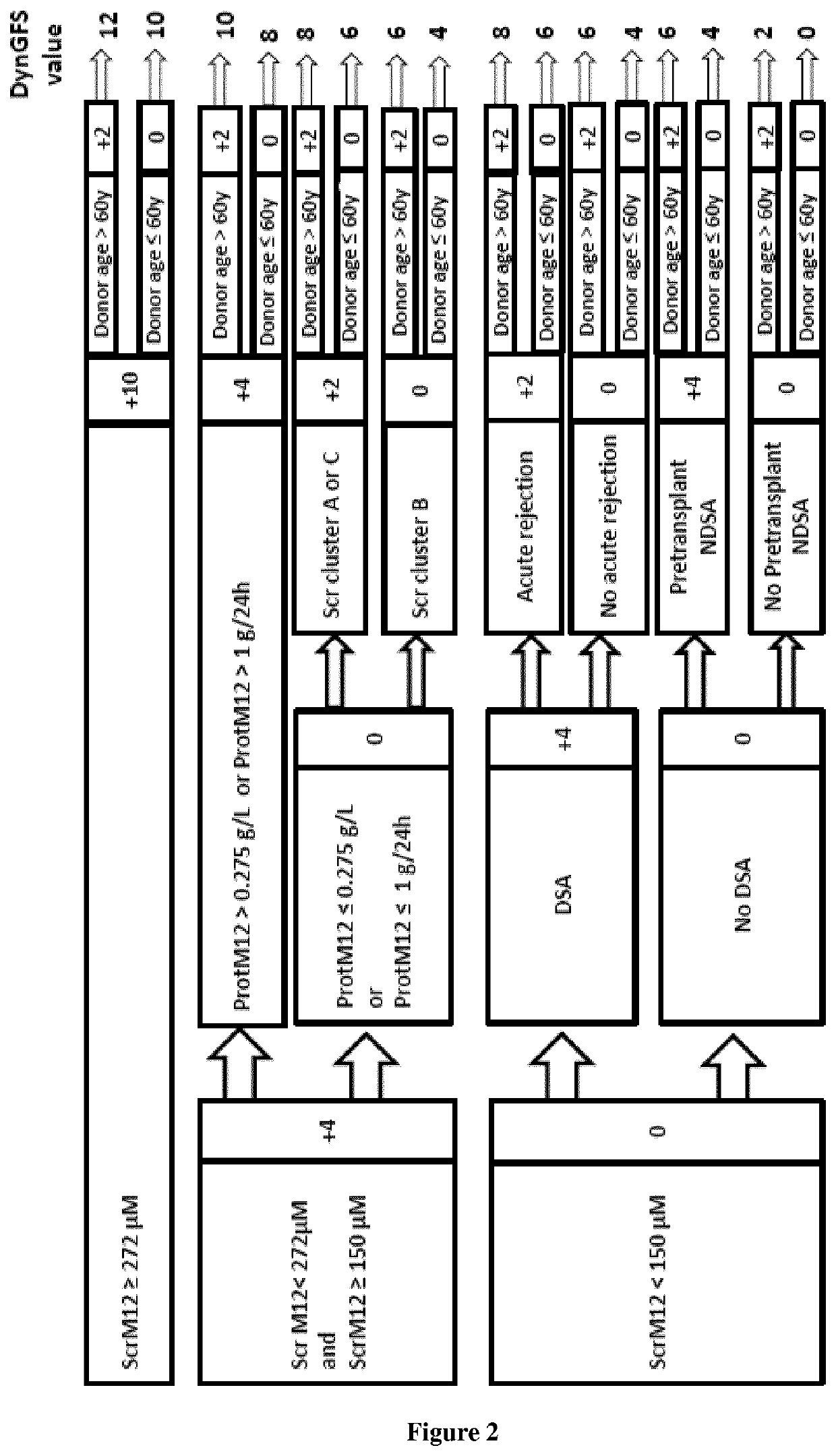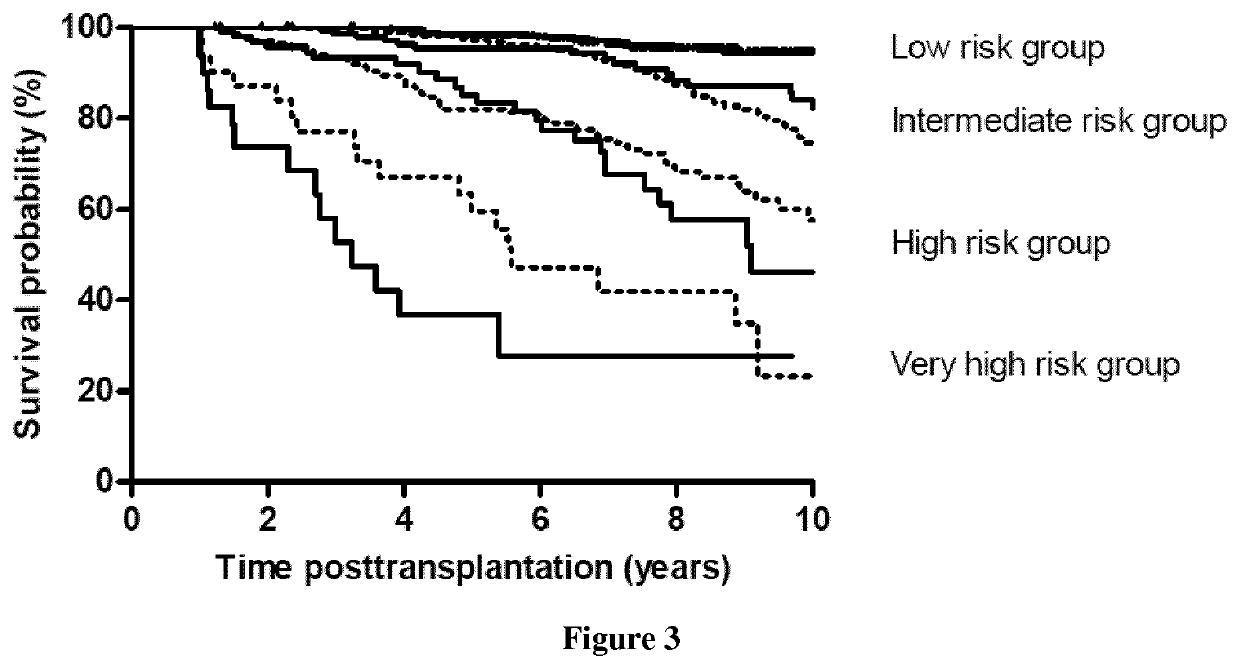Methods for assessing graft failure risk
a risk assessment and graft technology, applied in the field of assessing graft failure risk, can solve the problems of poor predictive value of serum creatinine for renal allograft loss, inability to consider the impact of de novo (dn)dsa, and inability to take into account the development of dndsa
- Summary
- Abstract
- Description
- Claims
- Application Information
AI Technical Summary
Benefits of technology
Problems solved by technology
Method used
Image
Examples
example
[0140]Material & Methods
[0141]This study adheres to the Declaration of Istanbul.
[0142]Database
[0143]Of the 819 transplantations performed at the University Hospital of Limoges (France) between december 1984 and december 2011, 664 were included in the primary cohort (development database). All 664 transplants studied came from heart-beating deceased donors and had a follow-up of at least one year after transplantation. The maintenance immunosuppressive regimen consisted mainly of one calcineurin inhibitor (cyclosporine or, since 2001, tacrolimus) associated with azathioprine (until 1996) or mycophenolate mofetil (after 1996) and corticosteroids (generally stopped between 3 and 6 months post-transplantation). All patients received induction therapy. Patient outcome was known for each patient at the date of the last follow-up. Death was considered as a censored event when the recipient died with a functioning graft. When graft function was not known on the exact date of death, the date...
PUM
 Login to View More
Login to View More Abstract
Description
Claims
Application Information
 Login to View More
Login to View More - R&D
- Intellectual Property
- Life Sciences
- Materials
- Tech Scout
- Unparalleled Data Quality
- Higher Quality Content
- 60% Fewer Hallucinations
Browse by: Latest US Patents, China's latest patents, Technical Efficacy Thesaurus, Application Domain, Technology Topic, Popular Technical Reports.
© 2025 PatSnap. All rights reserved.Legal|Privacy policy|Modern Slavery Act Transparency Statement|Sitemap|About US| Contact US: help@patsnap.com



